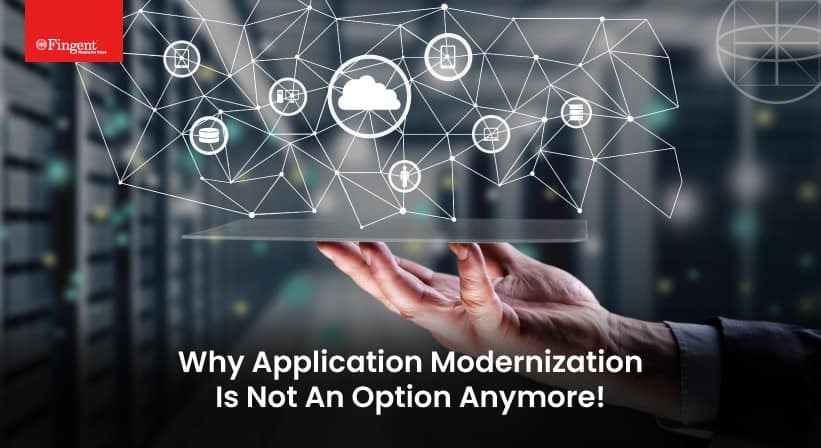Selecting the Right Engagement Model for Business Software Development
The Prelude
Software Development has shaped the economic and social face of the world in the last three decades. What was once considered gibberish and confined to the elite minds that put humans on the Moon and cracked the German Enigma is now a popular profession that has created landmarks like the Silicon Valley and icons like Bill Gates and Steve Jobs. With the spurt in revolutionary product ideas in the late 90s, the need to put those ‘ideas’ into execution demanded the best development-skills, and this ‘demand’ has been only growing with time.
This brings us to an aspect of software development that has always been a vital business decision for companies – the most cost-effective engagement model. Business Software development has moved from being a mandatory in-house requirement by relaxing its rigidness and now accepting offshore and even freelance development. Choosing the right engagement model for software development is therefore essential to create state-of-the-art products without which it is impossible to survive in this cut-throat market.
Here is what we think about choosing the right engagement model:
1) The Package Tour aka the Fixed Price Model
Imagine this: You have decided that you want to visit a popular tourist destination, and it’s just to check an item off your bucket-list. The best bet you probably have is to take up a package that includes every attraction in the city; you may even fix the sightseeing spots which interest you before the tour starts!
This is a great option if you have done some meticulous research on the places you need to visit, the distances between them, the time spent in traveling from one location to another, the opening and closing hours of museums and galleries, and so on. The flip side is that you are in no position to experience flexibility. However, you can be satisfied that everything you’d asked for was provided and that you are not paying anything more or anything less than what you had agreed on initially.
Extend this to the realm of software development engagement; if you know your requirements, and your financial and temporal limits, this ‘Fixed Price’ model is the best choice for you. The Fixed Price model can also serve as a litmus test for hiring freelancers or development partners.
The Pros:
- It’s well-defined and well-negotiated. There’s no room for lapses.
- There is a push to get the complete picture of the software even before the development starts.
The Cons:
- There is no room for flexibility. Your eureka moment of a new feature should wait to materialize.
- Any gaps in communication would mean that the delivered product could be unsatisfactory.
The Fixed Price model works best for developing products on a short-term basis with features that are hot in the market, maybe with some additions and features that give it an extra garnish of appeal!
2) The Chauffeur-Driven Hired Car aka the Time & Material Model:
So, you’ve arrived at your destination, and you are feeling a bit adventurous and you are sure that you do not wish to confine your experience to a ‘package’. So, you decide to hire a car with a driver and pay that person for the time spent and distance covered (the experience and expertise of the driver would be an added variable).
In this manner, you are free to add items to your itinerary, and you are free to remove them at your will. You feel free to stop at any place and enjoy as much as you want, as long as cost and time are not concerns.
This is what the Time and Material model feels like for both companies and freelancers alike. Great products are not built because of a moment of realization, but by systematically accumulating and integrating ideas. For this to happen, flexibility is an essential attribute, which in this fast-paced market, in Sherlock’s words, is Elementary, Dear Watson!
This model also ensures continuous communication and a transparent and healthy vendor relationship.
The Pros:
- Super-Flexible
- You Only Pay For What You Get (If only there was an abbreviation like WYSIWYG!).
- There is a definite possibility for networking, not just on professional, but also on social lines.
- Granular Monitoring on a regular basis, especially in Agile Methods.
The Cons:
- You pay until you get what you want.
- In rare instances, in unethical companies, there could be a deliberate delay in development.
We’re yet to come across a situation or an industry where this might not work; who would not want to get into a development method that is so flexible, accommodative and modular.
3) The Self-Driven Car aka the Dedicated Developer Model:
You arrive at your destination, and instead of trusting a package, or instead of hiring a car by the hour, you decide to take a car all by yourself. It doesn’t matter whether you drive your car for an hour in a day or 23 hours and 59 minutes in a day, it’s all yours. Drive it on the road, and (if the car allows) offroad – there’s no stopping you!
However, this comes with a condition – you will need to know where you’re going, and everything about where you will go, maybe not the route map, but at least the time and distance. All this might sound difficult, but at least, the comfort-point you have is that the car you’ve hired is as good as yours, except that it’s not.
Hiring dedicated developers to work like that – you can take them in-house, and you need to pay them a fixed amount on a monthly basis. Once your product is done, you can, without the guilt of firing or the pain of attrition, ask them to leave. This also means that you have saved up on the recruitment costs, and you don’t have to keep paying for a resource you no longer need.
This model brings the best of both the above models – you have agreed for a fixed payment on a monthly basis (with no hard restrictions on the product-features) and you are free to alter the product or the features, or even shuffle the resources based on their skill-sets!
The Pros:
- You are in complete control. It’s almost like having an in-house team.
- You don’t have to go through the hassles of administration and hiring.
- There is a sense of ‘belonging’ for the dedicated developers in terms of both- the product and the organization.
The Cons:
- It needs management skills and a blue-hat vision of the product to get the best out of a dedicated team.
- If you have both in-house and dedicated developers, there is a chance of conflict.
- Or even worse, there can be possible siphoning of talents!
The Verdict:
You might have already sensed that we’re leaning towards the Time and Material model as it gives significant control, and with strategic planning, it could be cost-efficient as well!
Our recommendation is still strong towards the Fixed Price model for smaller products with limited functionalities, and for short-term projects like developing a module for an already robust tool. Conversely, if your project is long-term and extensive, it makes more sense to hire dedicated developers.
Stay up to date on what's new

Recommended Posts

10 Feb 2024
Why Are Leading Businesses Prioritizing Application Modernization
“In Today’s era of volatility, there is no other way but to re-invent. The only sustainable advantage you can have over others is agility, that’s it. Because nothing else is……

20 Dec 2023 B2B
Driving Smart and Sustainable Agriculture with Customized Technology!
As the world grapples with the challenges of climate change, soil degradation, and resource scarcity, agricultural organizations find themselves at a critical juncture. The urgency for adopting sustainable farming practices,……

08 Sep 2023 Education Healthcare
Types of Application Software: A Detailed Guide for 2024
Types of Application Software: Guide for 2025 Table of Contents Understanding Application Software: Types and Business Benefits What is Application Software? Examples of Application Software Difference between System Software and……

28 Aug 2023 B2B
A Quick Guide On Open Source Security and Risk Management
“In the digital era, privacy must be a priority. Is it just me, or is secret blanket surveillance obscenely outrageous?” - Al Gore The internet is a great big place with……
Featured Blogs
Stay up to date on
what's new

















 US
US Insurance
Insurance









































